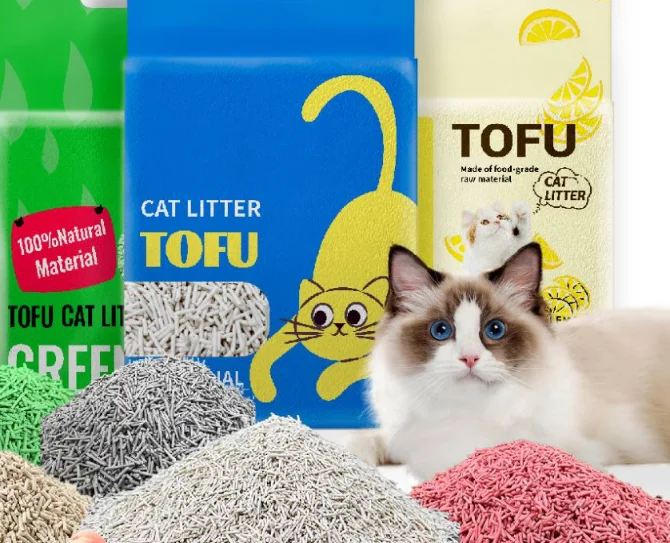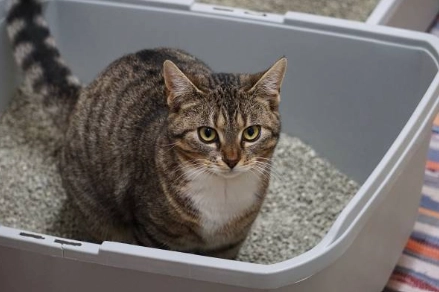Global Trends Shaping the Cat Litter Market

Increasing Pet Ownership and Its Impact on Demand
More people are getting cats worldwide. This boosts the need for cat litter. As homes welcome feline friends, good litter solutions become a must. This is especially true in cities. Indoor spaces need clean ways to handle pet waste. Pet owners care more about their cats’ health now. They want litter that’s hygienic, easy to use, and kind to the planet. This pushes demand for new, smart cat litter products.
Urbanization and the Growing Need for Cat Litter Products
City life is changing the cat litter market. More folks move to urban areas. They live in smaller homes. That makes waste management for cats super important. City dwellers like things that are convenient and tidy. They go for clumping or flushable cat litter. Companies are stepping up. They offer small packages and green options. These fit the fast-paced urban vibe perfectly.
Rising Awareness of Pet Hygiene and Odor Control
Cat owners focus a lot on keeping things clean. They want litter that stops smells and stays fresh. Products like bentonite cat litter are a hit. It clumps well and has no dust. It’s great for homes with multiple cats. Bentonite soaks up moisture and odors fast. The litter box stays nice and clean. As people learn more about pet health, they pick litter that’s both effective and eco-friendly.
Key Product Types in the Cat Litter Market
Clumping Cat Litter: Features and Benefits
Clumping cat litter is a top pick for many. It’s super handy and works great. Made from sodium bentonite, it turns into hard clumps when wet. You can scoop out waste easily. The rest of the box stays clean. It’s dust-free too. That’s better for cats and owners. Plus, it often has stuff to neutralize smells. Your home smells fresh all day.
Non-Clumping Cat Litter: Popularity and Use Cases
Non-clumping cat litter has its fans too. It’s cheaper and appeals to traditionalists. It soaks up moisture but doesn’t clump. You need to change the whole box more often. It’s good for homes with one cat. It also suits people who want to save money over fancy features.
Specialized Options: Crystal, Tofu, and Mixed Formulations
The market has unique litters for specific needs:
Crystal Cat Litter: Great at soaking up liquid. It controls odors for a long time.
Tofu Cat Litter: Made from natural stuff like soybean fiber and corn starch. It’s biodegradable and green. It fights smells well and is safe for cats.
Mixed Formulations: These blend materials like clay and plant bits. They offer a mix of performance and eco-friendliness.
Regional Insights into the Cat Litter Market
North America: Leading Trends and Growth Drivers
North America rules the cat litter market. Lots of people own pets here. They spend big on high-end pet products. Quality beats price for them. That’s why bentonite-based clumping litters are everywhere. Green practices matter too. Companies make eco-friendly options for buyers who care about the planet.
Europe: Steady Demand for Sustainable Products
Europeans love sustainable stuff. Strict eco rules and aware shoppers push this trend. Biodegradable litters like tofu cat litter are catching on. They’re effective and kind to the environment. New packaging ideas help too. They cut down on waste and look good to buyers.
Asia-Pacific: Rapid Growth Due to Urbanization and Pet Adoption
Asia-Pacific is booming for cat litter. Cities are growing fast. More people are getting cats in places like China, India, and Japan. As folks earn more, they buy better pet products. Crystal or mixed litters fit urban life well. They’re designed for small spaces and busy schedules.
Challenges Facing the Cat Litter Market Expansion
Environmental Concerns Over Non-Biodegradable Materials
Non-biodegradable cat litter hurts the market’s growth. Clay-based litters use up resources. They pile up in landfills since they don’t break down. Eco-aware buyers aren’t happy about this. Some litters, like silica gel, also have a big carbon footprint when made. Companies need to switch to green options. Think tofu or wood-based litters. That’s the way to fix these issues.
Price Sensitivity Among Consumers for Premium Products
Fancy cat litters are awesome but pricey. Clumping or eco-friendly ones perform great. Still, their cost scares off some buyers. Many pick cheaper options over cool features. This is true where money’s tight. Companies struggle to bring new ideas to these shoppers. They need to keep quality high but prices fair to grow their market.
Supply Chain Disruptions Impacting Distribution
Global supply chains are a headache for cat litter. Shortages of raw materials slow things down. Shipping delays and high transport costs add trouble. These issues raise prices. They also cause empty shelves. That annoys customers and hurts brands. Companies must build stronger supply chains. Local sourcing could help dodge these problems.
Future Opportunities in the Cat Litter Market
Growth Potential for Biodegradable and Sustainable Solutions
Eco-friendly products are a big chance for cat litter. People want stuff that’s good for the earth. Tofu cat litter is a star here. It’s made from soybean fiber and corn starch. It breaks down naturally. It also fights odors great. Buyers love its green vibe and solid performance. Companies can grow by adding more litters like this to their lineup.
Integration of Smart Technology in Health Monitoring Litters
Smart tech is shaking up cat litter. Litters with sensors can check a cat’s waste habits. They spot changes that might mean health problems. Think urinary issues or kidney trouble. Pet owners today care about their cats’ wellness. These high-tech litters meet that need. Companies investing in this can stand out. They’ll make customers happy with fresh solutions.
Expansion Through Subscription Services and Direct-to-Consumer Models
Subscriptions and direct sales are a great path forward. They let companies connect with buyers for the long haul. Custom plans send litter right to your door. No need to reorder. Direct-to-consumer setups let brands talk straight to customers. They get feedback and can offer special touches. That builds trust and keeps people coming back.

FAQs
What are the main challenges facing the cat litter market?
Eco issues with non-biodegradable stuff. Shoppers watching their wallets. Supply chain hiccups slowing delivery.
Why is biodegradable cat litter gaining popularity?
It’s kind to the planet. Tofu cat litter, for example, fights smells well. Eco-aware folks love it.
How does smart technology benefit the cat litter industry?
It tracks waste patterns with sensors. Alerts owners to health concerns. Keeps cats in top shape.
What role do subscription services play in market expansion?
They’re easy for buyers. Deliveries come on time. Brands get steady cash and closer ties with customers.
Which sustainable materials are used in eco-friendly cat litters?
Things like soybean fiber, corn starch, and wood chips. They’re green and leave less mess behind.
For more on creative pet care or custom solutions, check out BASTET (Tianjin) Pet Products Co., Ltd. Their products mix quality with value.




